Farewell Golf 7, and Thank You – A Comprehensive Review After Nearly 3 Years of Ownership
公開日:2019.05.30
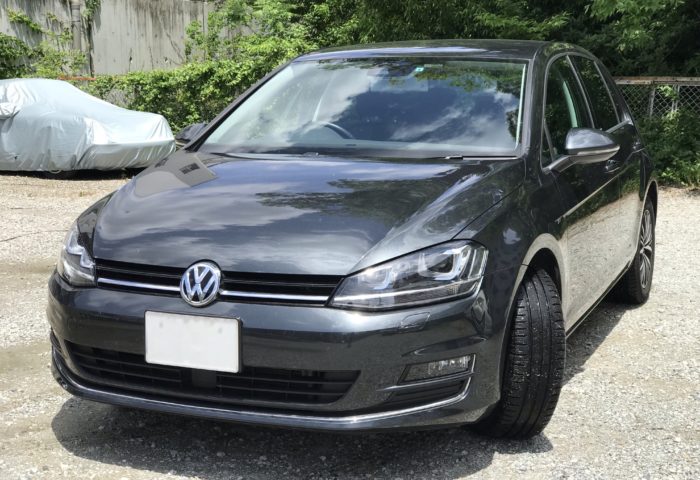
VW Golf 7
Recently, with the arrival of the BMW 320i at our home, we had to reluctantly part ways with our Volkswagen Golf 7 Allstar. The Golf we had was a limited edition model featuring a 1.2L engine, 7-speed DCT, special Carbon Steel Grey Metallic body color, 20-spoke alloy wheels, uniquely designed fabric seats, and emblems and door sill plates bearing the “ALLSTAR” logo.
The Golf was truly, truly a wonderfully well-made car. Unless you’re frequently doing long tours or hitting the track hard, this single Golf is more than enough to cover all your needs. I’ve written many times on this blog about the Golf’s excellence, but now that I’ve owned it for 2 years and 9 months, I’d like to share my final thoughts on it.
Overall Evaluation of the Golf
High Performance as a Car
I believe the Golf has very high fundamental performance as a car. Porsche is often praised for being excellent at “driving, cornering, and stopping,” and the Golf is exactly the same. The handling feels great, and the brakes are very effective. The ride is firm but very smooth, so you don’t get tired even after long drives.
It also has excellent high-speed stability; cruising at 100 km/h or changing lanes at speed is no problem at all. The doors aren’t flimsy but have a satisfying weight, giving a strong sense of security from the impression of a “well-built car.”
Our Golf had a 1200cc engine, but I never felt underpowered. There was absolutely no feeling of “pressing the accelerator but not moving as much as the engine noise suggests,” and it actually felt like a powerful car. The steep hill in front of our house is quite challenging, but even there, pressing the accelerator firmly made it climb strongly.
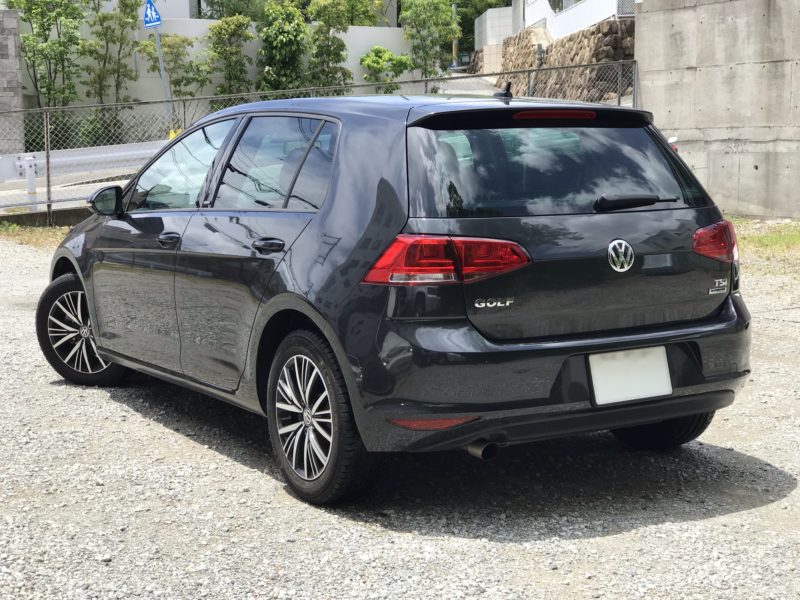
Maneuverability
There are places where the Panamera can’t park, but the Golf fits in easily. Many times we’ve said, “That shop’s parking is tight, so let’s go with the Golf.” Also, I visit both our families’ graves once a month, and since I have to drive on narrow rural roads and small paths, I always took the Golf.
The Golf can go anywhere, park anywhere, and handle any supermarket or store without issue. Its high performance makes it a perfect car for my wife’s daily use.
Cost Performance
For all this performance, the new car price was just around 3 million yen. That’s cheaper than options for a GT3 Touring (laughs). With this level of performance, it could easily be priced higher…! (Though honestly, I’m happier it’s cheaper.) Compared to similarly priced domestic cars in the same grade, I personally think, “If you’re choosing between those, the Golf is definitely the better choice!”
Also, the Golf is very reliable. We sold ours before reaching 30,000 km, so issues might appear closer to 100,000 km, but at least at this point, there were no breakdowns, malfunctions, or errors at all. The oil hardly decreased and was only changed during the annual inspection.
Spacious Rear Seats
Though the Golf is a compact car, the rear seats are relatively roomy. The seat cushion seems a bit longer, and even my 178 cm tall husband could sit comfortably and said, “This makes long rides less tiring.”
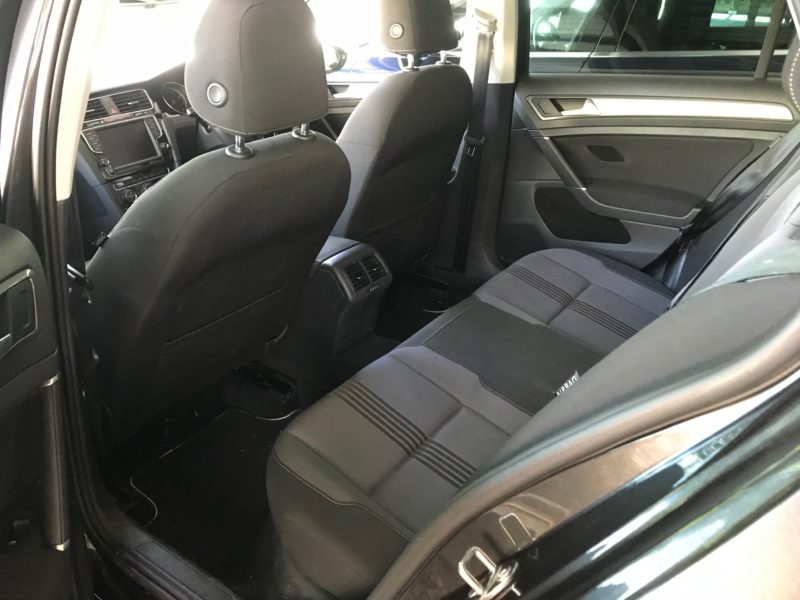
Fuel Efficiency?
In our case, since we inevitably compare it to Porsche models, the Golf’s fuel efficiency just seems incredibly good (laughs). When my husband uses the Golf for commuting, the fuel economy is about 14–15 km/L. Even when I drive on highways or around town, it’s about the same.
That said, the Panamera’s fuel efficiency has improved recently. On a recent tour, the Panamera’s overall fuel consumption was 9.8 L/100 km (10.2 km/L).
Good Cargo Capacity
The Golf can carry quite a bit of luggage. The trunk fits a large L-size suitcase, and even a stroller fits easily. Whenever we went shopping at Nitori, we always took the Golf, and never once had trouble fitting our purchases.
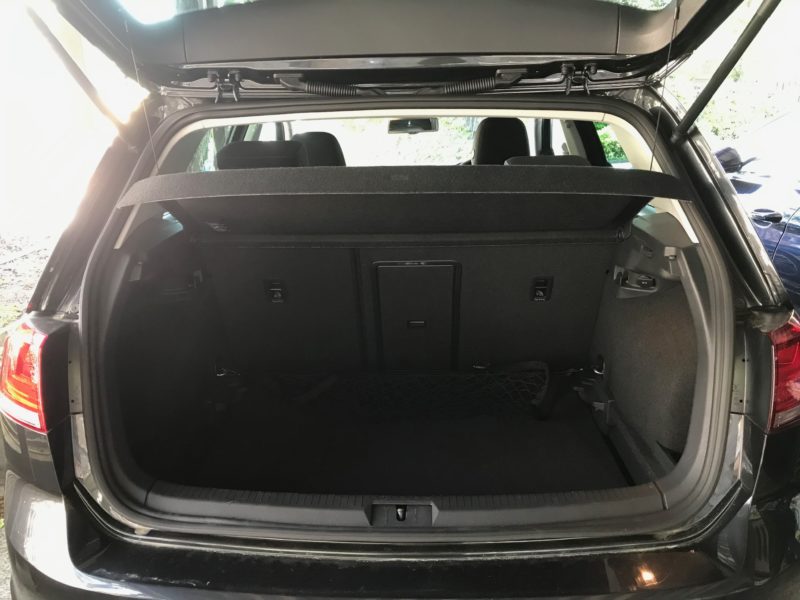
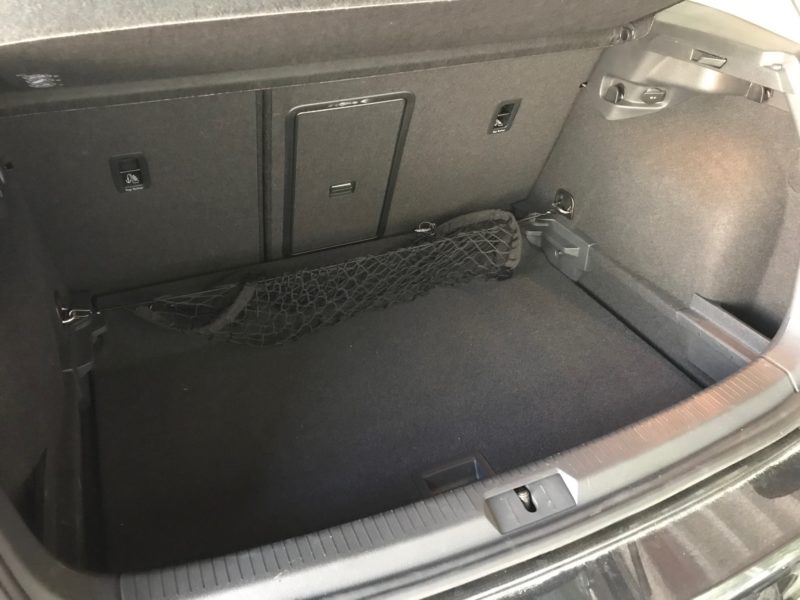
Poor Resale Value
The biggest downside of the Golf is probably its poor resale value. When we had it appraised at Volkswagen recently, the trade-in value was about 40% of the new car price. By comparison, when appraised at BMW, it was about 25% of the new car price. Even with such excellent performance, no breakdowns, no accident history, and under 30,000 km (28,353 km), that’s the reality.
Next, I’d like to share my husband’s eagerly awaited (lol) overall evaluation of the Golf 7.
Husband’s Overall Evaluation
Solid Feel
The first thing you notice when driving the Golf is its “solid feel.” The weight and closing feel of the doors, even the rear doors, are well-made with no sense of shortcuts anywhere. (Some domestic cars have sturdy front doors but flimsy rear doors.) The driving experience also has a strong sense of contact with the road, and the body feels like a firm, solid shell that inspires confidence.
This solid feel really shines when driving at high speeds on highways. It’s extremely stable. At typical Japanese highway speeds, you can blast down the passing lane without any worries. Being a car more comfort-oriented than Porsche, I honestly think the Golf often feels more stable and reassuring mentally and physically.
Its arrow-straight stability and solid suspension make high-speed lane changes and cornering very confident. The brake pedal feel is also excellent in control and effectiveness. Even during sudden braking at high speeds, the body remains stable without shaking, a testament to its Autobahn heritage. Getting this level of performance new for around 3 million yen is basically a bargain.
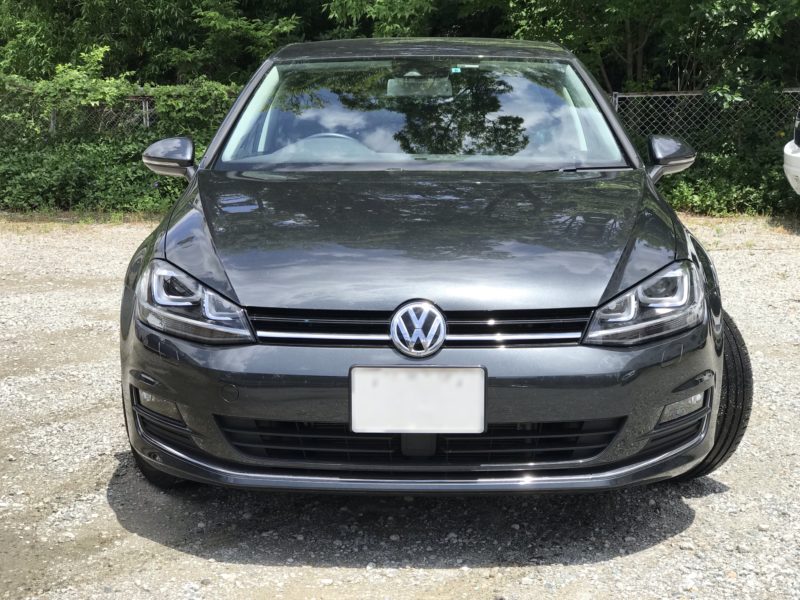
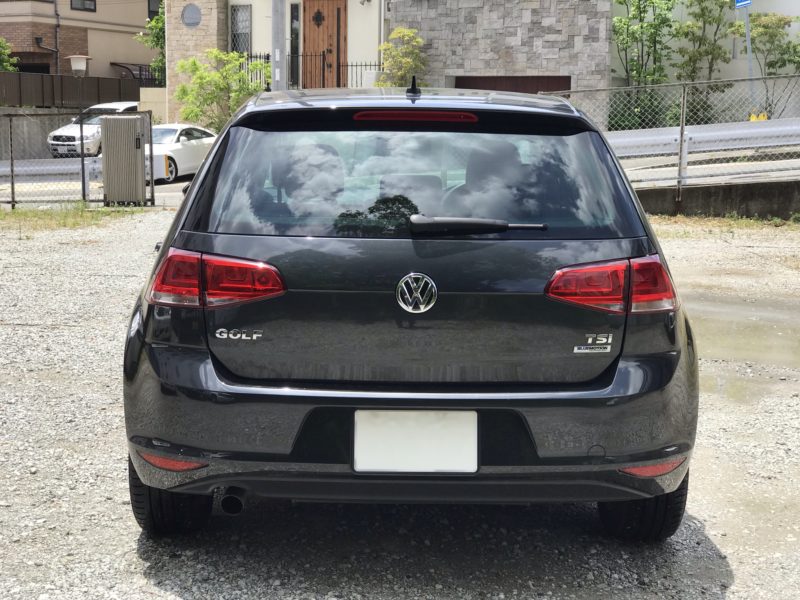
Engine / Transmission
The engine is Volkswagen’s signature 1.2L downsized turbo, but it has torque from low rpm and is easy to drive. Those used to Japanese torque converter automatics or CVTs might find the twin-clutch DSG a bit strange.
However, with every gear change, the tachometer needle drops sharply, and the acceleration continues smoothly without any coasting feeling, giving a manual transmission-like driving sensation that I personally like. Shift shocks are almost nonexistent, and you can’t tell what gear you’re in without looking at the indicator. Although there are often stories about “dry DSG problems or noises,” this particular car had no issues or malfunctions whatsoever.
One downside of this DSG, common to many modern cars, is its fuel-efficiency-focused tendency to upshift earlier than necessary. Especially in the Golf 7, it shifts to 2nd gear immediately after starting, which can feel sluggish when you want to accelerate briskly.
In such cases, switching to S mode provides a more suitable shift schedule, so I often drove in S mode.
Also, with the ‘Auto Hold’ function ON, which lets you release the brake while stopped, starting off smoothly takes some getting used to because pressing the accelerator normally causes jerking. You need to lightly tap the accelerator first to release Auto Hold, then accelerate smoothly.
Apparently, this was improved in the later Golf 7.5 model.
This engine delivers acceleration at high speeds that belies its mere 105 PS. Like many European cars, this is largely thanks to clever torque delivery and gear ratios. Even accelerating from 100 km/h feels smooth and responsive. Don’t underestimate the 105 PS; it’s more than enough to lead on Japanese highways on weekends.
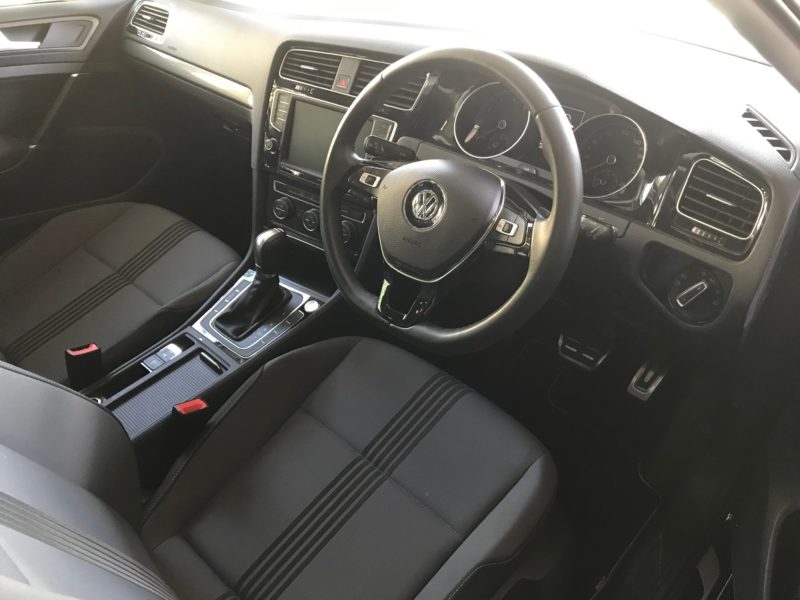
Ride Comfort
Regarding ride comfort, I think it’s exceptionally good for its class. Of course, “ride comfort” is subjective—some prefer a soft, floaty feel, others like flat or firm rides.
For the Golf, those who value flatness will find the ride very comfortable. I once drove this Golf on a Tokyo-Osaka trip, switching drivers with a previous owner of an AUDI A4 Quattro (sedan), and he was amazed, saying, “The Golf has much less vertical movement even at high speeds—amazing!”
Note that the Golf 1.2 uses a torsion beam rear suspension, unlike the 1.4’s multi-link. Comparing the two, the 1.4 is smoother, but frankly, I don’t think anyone would say the 1.2’s ride is bad. It’s just that the 1.2 might feel a bit bouncy over rough or large bumps.
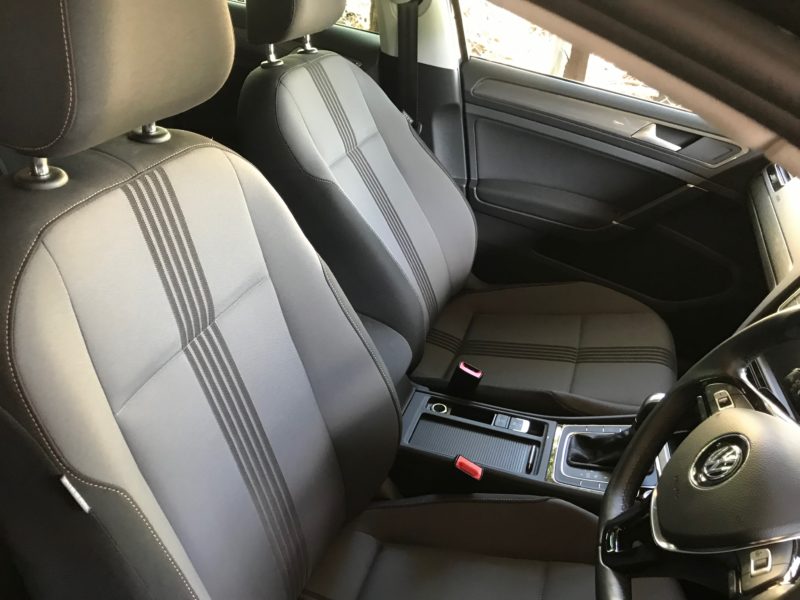
Golf Comes Highly Recommended
If you’re considering a car in this class, I absolutely recommend the Golf with full confidence. However, if you don’t drive on highways, don’t do long distances, and just want a comfortable city car, I suggest looking elsewhere.
That’s because the Golf’s strengths won’t shine in those cases, and it might just be seen as another ‘imported car’ without any special appeal.
The Golf is a car I want people to drive who value reliability, safety, and the fundamental performance of “driving, cornering, and stopping” as a tool for transportation. For those people, it’s truly the ideal car.
このブログが気に入ったらフォローしてね!


Comment ( 0 )
Trackbacks are closed.
No comments yet.